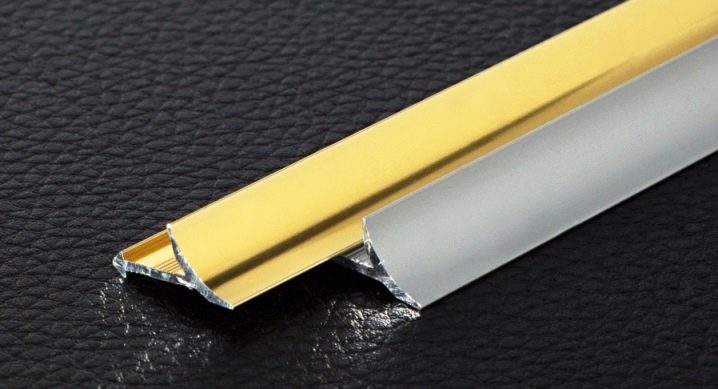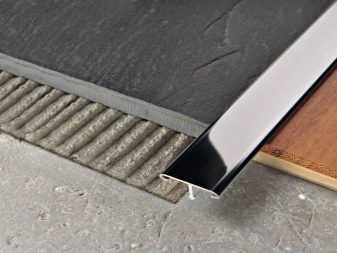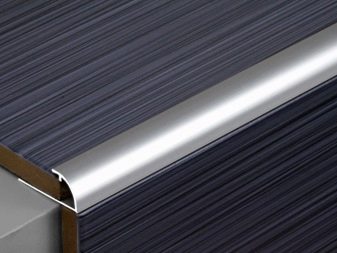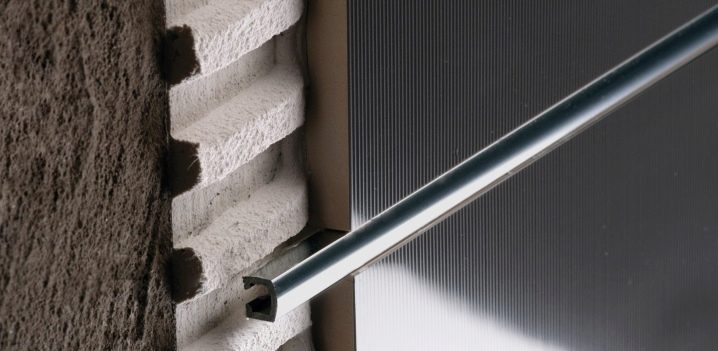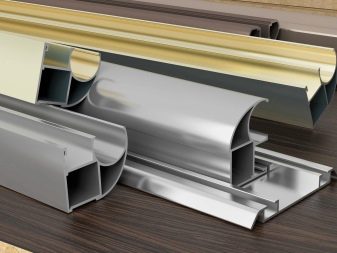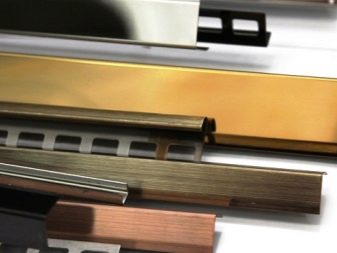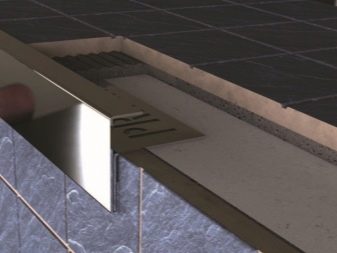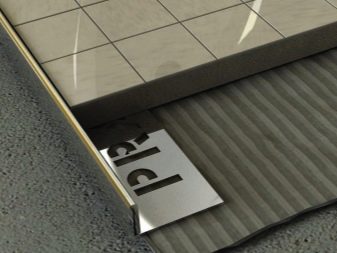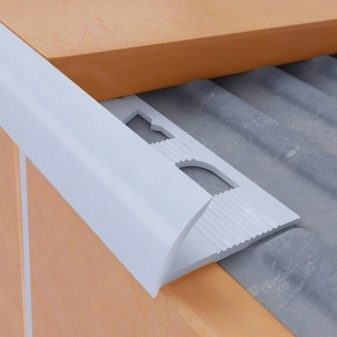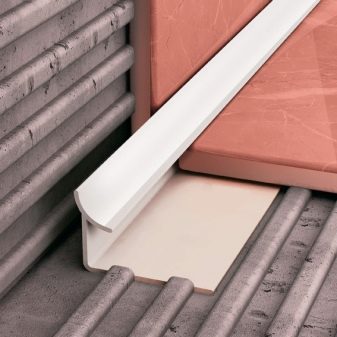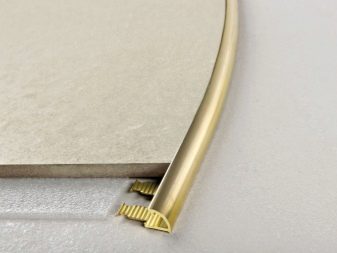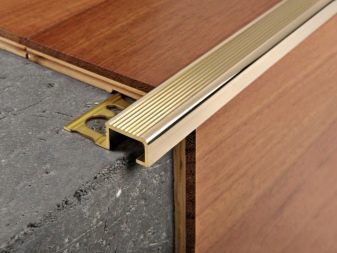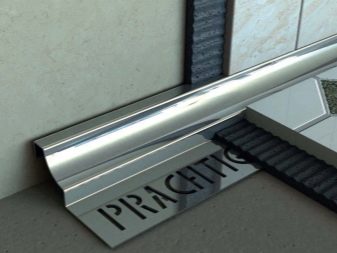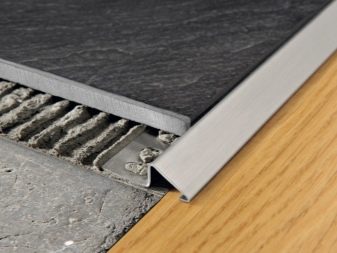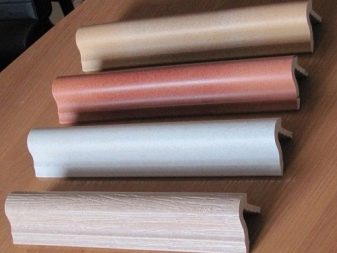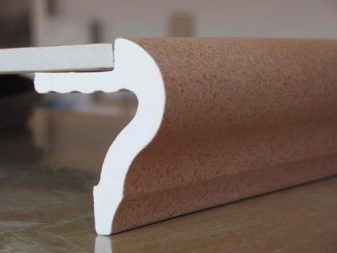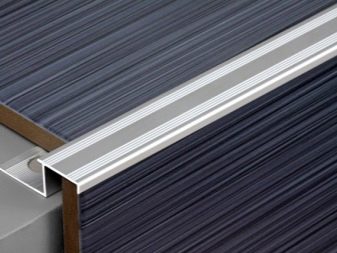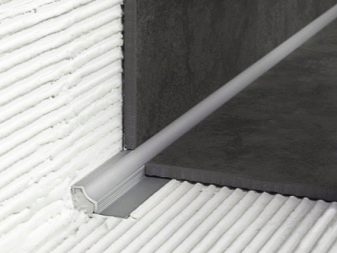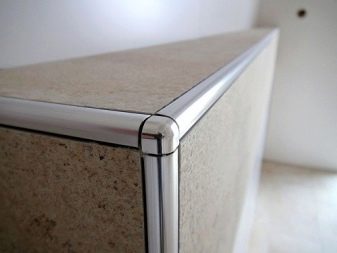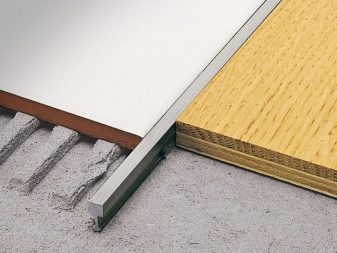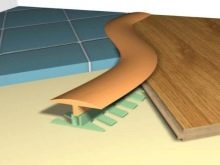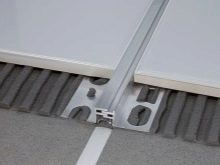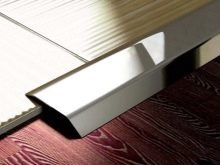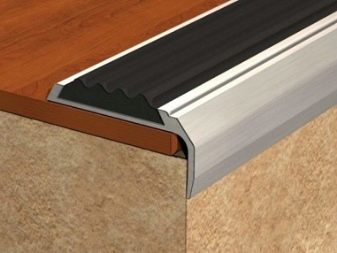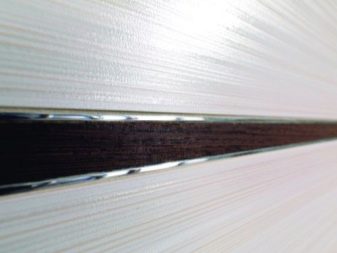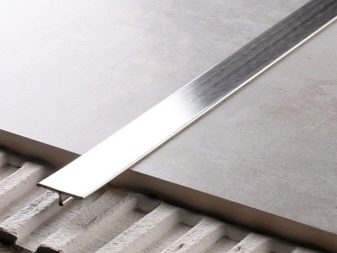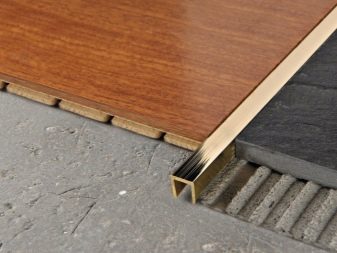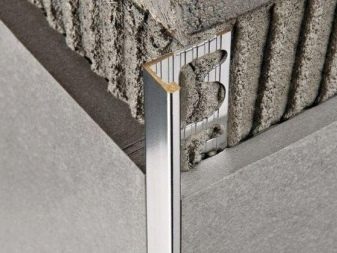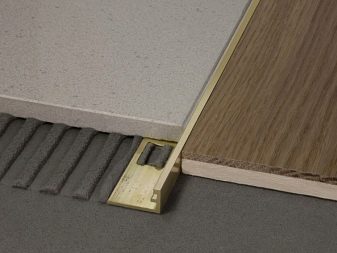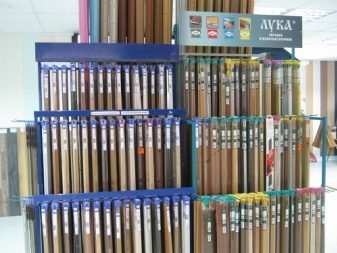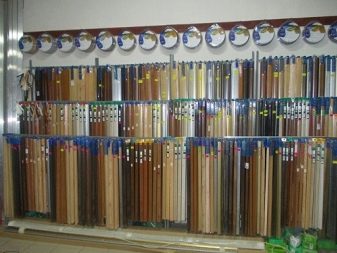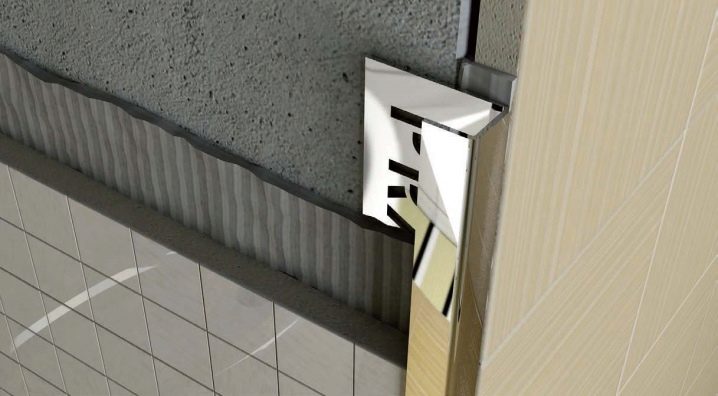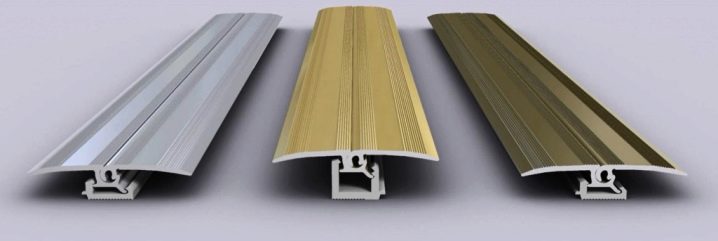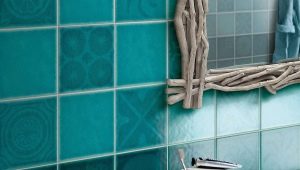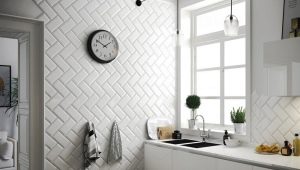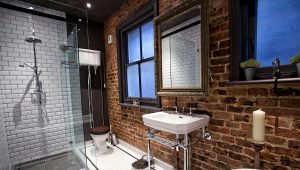How to choose a profile for a tile?
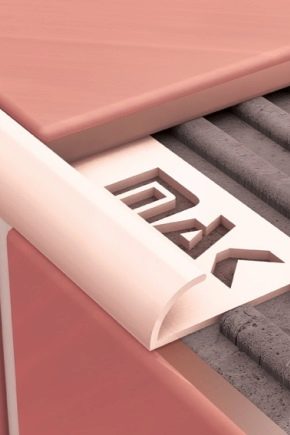
An important detail of modern design, which is used during the design of ceramic tiles room of the kitchen, bathroom and toilet, is a profile. It is installed between the plates, it resembles a curb or frieze. This is an integral component of the installation of ceramic coating, which performs a special role in terms of aesthetics and practice. That is why it is important to know how to choose a profile for a tile so that the interior of the room looks complete.
What is it needed for?
Properly selected profile for the tile, which is also called trim or layout, can improve the appearance of decorative trim. He can solve certain technical issues that periodically arise in the process of installing tiles and parquet, even if performed by an experienced master.A simple product covers the tile from several sides, masking the raw edges of the ceramic coating.
The profiles for the tile a lot of advantages. We note the main ones:
- The ability to mask minor surface irregularities and installation errors of tile material.
- Corners and joints of the tile, combined with other materials, are reliably protected from chipping and other damage.
- Laying tiles, thanks to trim, occurs quickly and efficiently.
- Tiled lining looks professional, the overall picture is aesthetically appealing and complete.
- Layout closes the gap, protects the inside of the wall from moisture and moisture, which eliminates the possibility of the appearance on the surface of the fungus or mold, and also extends the service life of the tile.
Materials
Tiled profiles can be divided into categories according to various criteria. The key material is the material from which the trims are made. According to this criterion, there are several types of profiles.
Aluminum
The product from this material ideally copes with rectilinear and curvilinear joints.It is intended to connect into one design of different flooring options, performs the function of the decoration of the ends.
Due to the aluminum tile profile, you can get clear corners or divide into several zones tile of different textures and colors.
Polyvinyl chloride (PVC)
This raw material in itself has an important advantage: it is distinguished by a variety of color solutions, therefore, choosing a profile that is suitable for the color of porcelain tile will not be difficult. PVC profiles are soft and semi-rigid. A big disadvantage of the first is fragility. The plastic profile differs in cheapness and abundance of color variations. PVC trims are easy to install, do not deteriorate from water, do not need special care, but over time they may lose their original attractiveness, turning yellow.
Made of brass
Brass profile is not just beautiful, because it imitates gold. It is quite durable, therefore, is in great demand among consumers. The scope of brass products - design steps, edging the ends and docking seams. Chrome-plated brass profiles are often used in bathrooms, they can be combined with a similar coating of mixers and other decorative elements.
Chrome coating ideally underlines the modern interior in high-tech style.
Stainless steel
The technical characteristics of profiles made from this material are almost the same as those of brass. The main difference lies in the higher durability of stainless steel trim (more than ten years). Such layouts are matte, polished, glossy and embossed.
Ceramics
This type of profile is not used as often, but it has worked well as a beautiful design of the transition between the bathroom and the wall. Ceramic layout surfaces are attractive, such profiles are durable. However, they can break up if something heavy falls on them.
Details of this material is easy to pick up a decorative coating of any color and shade.
Types and forms
Buying a profile can not be a spontaneous, rash decision. On the modern market of building materials a wide range of this type of products is presented. To buy a profile for a tile, you need to find out what are its types, which one is suitable in a particular case.
To destination profiles under the tile are divided into several varieties:
- Exterior edging designed to design protruding corners, in another they are called "end". Often edging trimmer made of aluminum, it protects the tile from damage and perform a decorative function.
- Edging internal use less often than the previous version of the profile. Due to the concave face, the transition between the sides of the corner part is smoothly smoothed.
Similar profile models make the junction of the bath with the surface of the wall.
- The final trim for the steps protect the edges of the tile from all kinds of damage. The combination of the final layouts with rubber linings makes the stairs less slippery. Products of this type are used exclusively indoors.
- Compensatory varieties hide deformation seams on the tile, which arise due to temperature changes. Such profiles, as a rule, have decorative overlays. They are usually mounted in spacious rooms.
- Docking profiles are a necessary detail when combining a ceramic tile with another material.Flexible PVC layouts or varieties of aluminum are used when the boundary between materials passes along a curve.
- Single-level profiles are used to fix surfaces of the same material (for example, linoleum, tile, laminate). They are indispensable assistants under the doorways, where the zone of connection of the flooring is formed.
- Multi-level products are designed for mounting flooring of various kinds of materials with different levels of height.
- The lining is an elastic profile that is resistant to water, the effects of aggressive substances and low temperature. Anti-slip pads - flat aluminum profile with a groove for inserting a rubber band. In addition to the anti-slip function, the overlays on the steps provide reliable protection of the tile against abrasion of the surface, thereby increasing the service life of the floor covering. This kind of profile is indispensable for finishing high-traffic areas, as well as stairways located on the street.
- Decorative profiles are made from different materials, they have a wide range of textures (for example, gold, stone, natural leather), decor (glass, rhinestones) and a rich color palette.
Decorative trims are used to conceal the visible flaws in the surface of the floor cladding or to emphasize its advantages.
Profiles under the tile of modern production differ in functionality and forms.
On sale you can see different options:
- T-shaped. This kind of profile is used as a docking and compensatory element at the final stage of tile laying. Widespread use of purchased parts made of aluminum, brass and steel.
- U-shaped layouts are used as end and connecting. They are made from aluminum, brass and steel.
- L-shaped profile performs the same function as the U-shaped.
- L-shaped (starting) ensures comfortable work with large tiles.
How to choose?
Details that at first glance may seem secondary and almost imperceptible can significantly change the overall look of the interior. Profile under the tile - a vivid example. This is a thing that little is said about when evaluating the interior of the room, although much depends on the choice of this element. Do not buy profiles for ceramic tiles last.Designers recommend choosing them carefully (at the stage of buying a tile).
Buying expensive tiles, you can not save on the corners. Plastic layouts measuring 12x12,8 mm will make the contact area of two walls perfectly flat and attractive. Metal products look stylish in any room, even if cheap tile was purchased. Metal is durable, it can last 10 years or more, when plastic loses its aesthetic appeal after 5 years of operation. The advantage of the metal edging is that it reliably protects the edges of the tile from chipping and cracking as a result of shocks and other external influences.
When choosing a profile for a tile, you need to pay attention to the following criteria:
- product specification (how many pieces are in a package, what are the dimensions of the profile);
- technical features of the model you like (production material, equipment, fixation method);
- color palette;
- the presence of decorative elements.
How to install the corners on the tiles with your own hands, you can learn from the video below.
